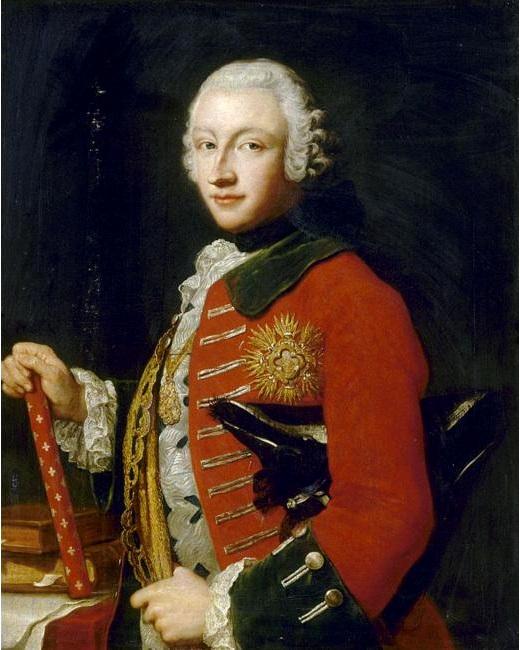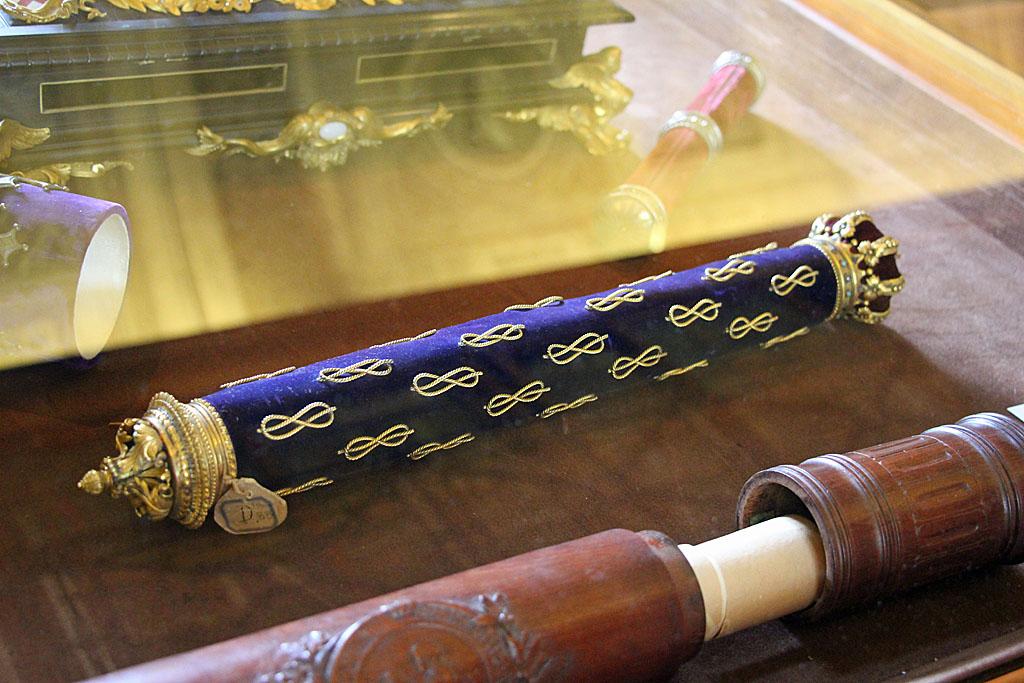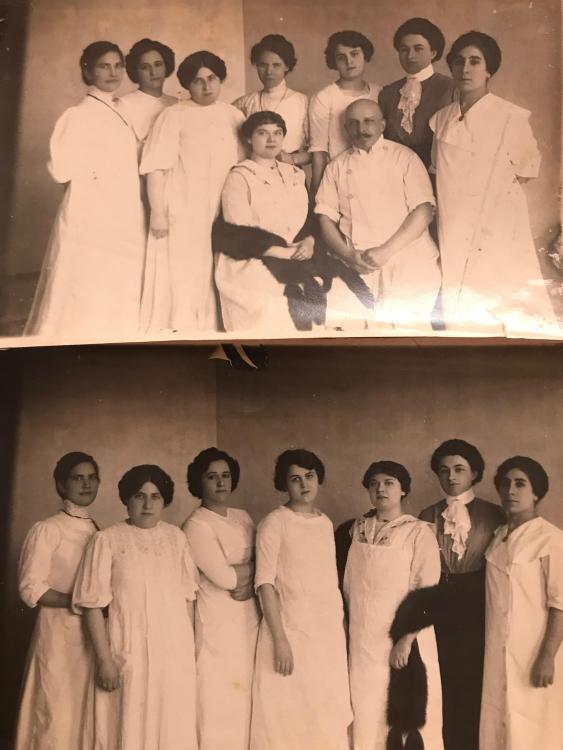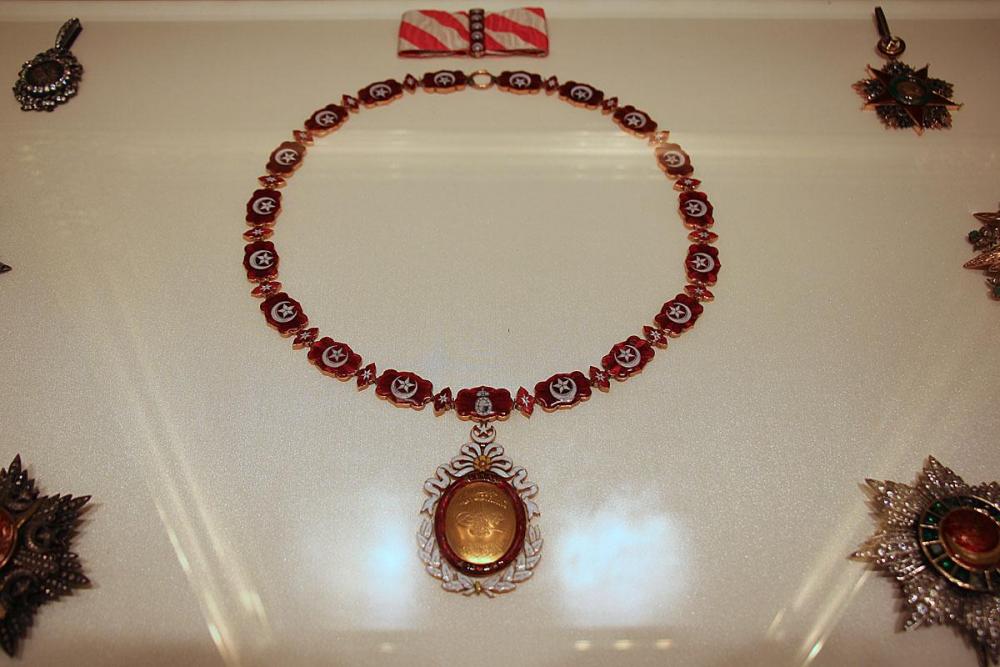-
Posts
1,721 -
Joined
-
Last visited
-
Days Won
3
Content Type
Profiles
Forums
Blogs
Gallery
Events
Store
Everything posted by Carol I
-

Italian Marshal's Baton?
Carol I replied to DarthZealous's topic in Southern European & Balkan States
The mystery baton also made me interested to look a bit more and I have found on Wikipedia the following portrait of Victor Amadeus III of Sardinia with a red baton with white crosses. Of course, it is not purple and with Savoy knots, but indicates that batons may have existed already in the 18th century. To me the style of the baton in the Royal Library of Turin is reminiscent of a later period in the 19th century (but I may be wrong). -

Italian Marshal's Baton?
Carol I replied to DarthZealous's topic in Southern European & Balkan States
I see no contradiction with the batons in the Royal Library that could have been the symbol of the king's position as commander in chief of the army. The presence of the decorative Savoyard knots on one of them places it undeniably in Savoy. -

Italian Marshal's Baton?
Carol I replied to DarthZealous's topic in Southern European & Balkan States
I do not remember any owner (it was 4 years ago) and have not found any label in the photos. I also have a faint recollection that the exhibits in the library were missing detailed labelling. On a second look, under the reflection of light onto the protective glass, to the left of the purple baton is the top of the storing case also in purple velvet and to the right another jewelled, red baton. -

Italian Marshal's Baton?
Carol I replied to DarthZealous's topic in Southern European & Balkan States
Browsing through some old photos I have found this image of an Italian/Savoyard baton on display in the Royal Library in Turin. -
I forgot to say that none of the classes of the 'official' Cross of Honour for Merit had surmounting crowns. Two questions stand out. Why would Carol allow a departure from the 'official' design and what would be the purpose of this award since Carol was rather unpopular and isolated politically while in exile, both during the second reign of his son and after the communist takeover.
-
Carol II has indeed established a Cross of Honour for Merit as a dynastic award organised in two classes (none of which had the design of the Da Costa piece). The cross was ranked below the Order for Merit that had a breast star for the highest class, again with a significantly different design from the Da Costa piece.
-

Polish VM to romanian officer, WWI
Carol I replied to Igor Ostapenko's topic in Central & Eastern European States
Captain Vasile Ionescu of 2nd Border Guards Regiment received the Order of Michael the Brave on the 15th of November 1917 for action on 3-6 August 1917. Please post better images of the whole award, including the ribbon. Thanks. -
Variations could be expected between pieces from different manufacurers. At the same time, being a rare order, fakes cannot be excluded. And to my knowledge there is no systematic study of manufacturers of this order to help in identifying authentic pieces. I find however the use of a type II crown with a type I cross rather suspicious, especially when this matching appears with other poor details like the use of a long suspension neck or narrow ribbons.
-
Are there any silver or jeweler hallmarks on the badge or the suspension ring? The suspension crown is very much like the crowns used for the 1941 model of the order and quite different from the majority of WWI-badges which had more detailed/detached arms. Also, the enamel seem quite rough in comparison to other 1916 model badges.
-

Prder of the Star of Romania
Carol I replied to MartinKa's topic in Central & Eastern European States
Indeed, strange eagles, no blue ribbon with the motto, strange monogram supposed to look like Carol II's (but made in the style of Carol I's), hinge below the swords and possibly wrong ribbon as well. -

Prder of the Star of Romania
Carol I replied to MartinKa's topic in Central & Eastern European States
It is not the official design the Order of the Star. I would stay away from it. -

Romania order of the Crown Type II
Carol I replied to Alex K's topic in Central & Eastern European States
The jeweller's first name was Heinrich and 589-36 was some sort of serial/production number. -

1939 "Work and Joy" Exhibition, Bucharest
Carol I replied to giorgos_p's topic in Central & Eastern European States
The group in white uniforms to the right of the photo are Romanian officials of the National Renaissance Front -

Romania order of the Crown Type II
Carol I replied to Alex K's topic in Central & Eastern European States
A nice Weiss example. The markings are "589-36", "HW" and the national mark for silver. -
https://lege5.ro/Gratuit/g42domrz/decretul-nr-16-1948-privind-infiintarea-ordinului-muncii
-
Thanks a lot Egorka! It seems that Mihail Glavatzchi's sister, Liza, worked as a nurse in the Ryshkovka (army?) hospital during the war.
-
Two more photos surfaced from the Bessarabian branch of the family. I would appreciate if you can help with a translation of the written legend on the back of one of them. P.S. I am a rather disconcerted by how quickly the time passes. I thought I posted the previous pictures only a couple of years ago, only to discover that almost 5 years have passed.
-
Great, thanks!
-
Very nice find, congratulations! It is amazing that you could find the context of the awards. May I please ask you for better resolution images of the award cerificates?
-

Gold Romanian Order of CRown cmdr perhaps?
Carol I replied to eurorders's topic in Southern European & Balkan States
It has the maker's mark, the period's state mark for silver (probably the one for the stated purity), so it is silver. -

Gold Romanian Order of CRown cmdr perhaps?
Carol I replied to eurorders's topic in Southern European & Balkan States
I think one admin could easily move threads. Alternatively you post the thread (again) in the right section and an admin can later delete this one or simply leave it pray to neglect... -

Gold Romanian Order of CRown cmdr perhaps?
Carol I replied to eurorders's topic in Southern European & Balkan States
It's most likely silver, but please move this thread to the relevant section for more details: Central & Eastern European States -
Indeed it is the style of wearing the sashes that is different for the Orthodox clergy and its origin could be that proposed by Utopis. As to the question whether they are 'normal sashes', the photographic evidence indicates that in some cases as that of Bishop Melchisedec above and Bishop Nifon (1860-1923) below they were narrower versions, at least those of the Romanian orders. And to come back to the orders that started this topic, please find a painting of Metropolitan Nifon (1789-1875) wearing an Austrian Order of Franz Joseph, apparently fastened directly to the ribbon of the Russian Order of St Anne. The Austrian sash is not visible.
-
Romanian clergymen have also worn the sashes around the neck: B/W photo of Bishop Melchisedec (1823-1892) and colour photo of Patriarch Teoctist (1915-2007).
-






